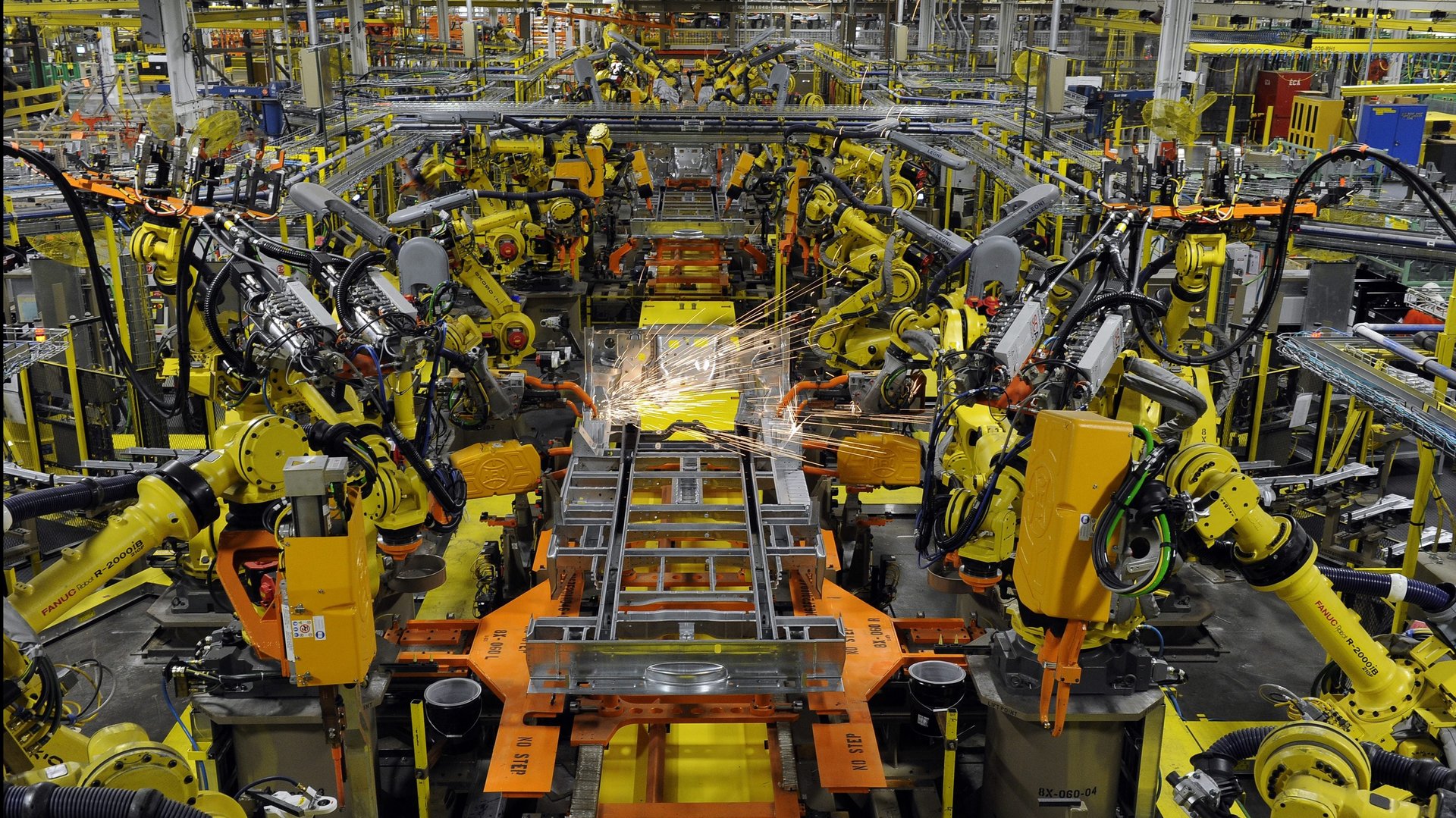Mexico isn’t taking US factory jobs—robots are taking both countries’ jobs
US Treasury secretary Steve Mnuchin remarked earlier this year that automation was “not even on [the Trump administration’s] radar screen” as an economic problem to worry about. Machines wouldn’t be replacing humans for 50 to 100 years, he estimated.


US Treasury secretary Steve Mnuchin remarked earlier this year that automation was “not even on [the Trump administration’s] radar screen” as an economic problem to worry about. Machines wouldn’t be replacing humans for 50 to 100 years, he estimated.
His boss appears to share that optimism. Donald Trump’s strategy to restore lost jobs is anchored on reaching deals with individual companies and a national drive to buy American. But it’s hard to see how those policies will counteract the growing automation of US factories.
Industrial robot sales are growing steadily, according to data from trade group Robotic Industries Association (RIA). In the first quarter of 2017, as Trump was settling in to the White House, industrial robot makers sold nearly 6,600 units, up about 20% compared with the same period last year. (RIA calculates there are 250,000 such robots in use in the US.)
Meanwhile, robots are gradually becoming cheaper, suggesting demand for them will continue to grow. Part of it has to do with the effects of Moore’s law (which delivers ever-greater computing power at the same cost) and economies of scale, says Alexander Shikany, RIA’s director of market analysis. Robots are also getting cheaper—and more ubiquitous—because of new, smaller and more flexible models that can be used for far more applications than they have in the past.
Most of the robots sold in North America last year, around 70%, were headed to plants that make cars and car parts, according to RIA. That’s potentially bad news for Trump, who’s keen on returning auto manufacturing jobs to the US. If it’s any consolation to him, robot use is also growing briskly in Mexico, which he accuses of taking those jobs. Robot manufacturers sold five times fewer units in Mexico than in the US during the first quarter, but that was a nearly 30% jump up from the same period last year.